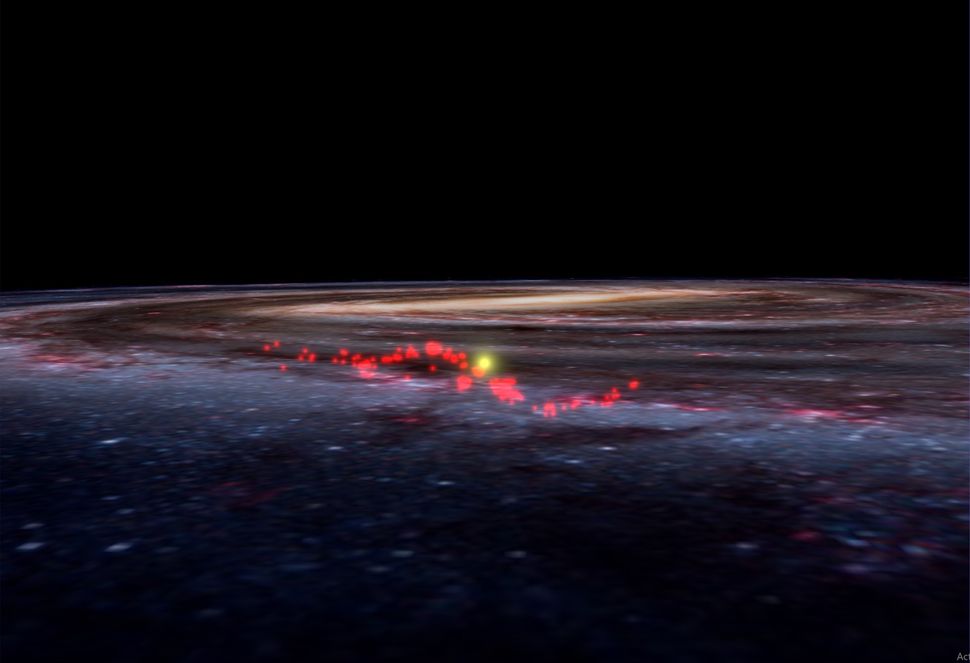Mysterious 'Wave' of Star-Forming Gas May Be the Largest Structure in the Galaxy
By Brandon Specktor - Senior Writer 10 hours ago
The newly discovered suburb of baby-booming stars could change our map of the Milky Way, astronomers say.

The Radcliffe Wave — a 9,000-light-year-long stream of star-forming gas (red) — swerves through the Milky Way in this visualization. The yellow dot marks Earth's sun, which may crash into the wave 13 million years from now.
(Image: © Alyssa Goodman / Harvard University)
Orion's belt may be more than just a waist of space.
According to new research published today (Jan. 7) in the journal Nature, the girdled constellation may also be a small piece of the single largest structure ever detected in the Milky Way galaxy — a swooping stream of gas and baby stars that astronomers have dubbed "the Radcliffe Wave."
Spanning about 9,000 light-years (or about 9% of the galaxy's diameter), the unbroken wave of stars begins near Orion in a trough about 500 light-years below the Milky Way's disk. The wave swoops upward through the constellations of Taurus and Perseus, then finally crests near the constellation Cepheus, 500 light-years above the galaxy's middle. The entire undulating structure also stretches about 400 light-years deep, includes some 800 million stars and is dense with active star-forming gas (known in more delightful terms as "stellar nurseries" ) .
When observed in 3D atop the rest of the Milky Way, this swooping suburb of baby-booming stars appears to be more than just the sum of its parts, study co-author João Alves said in a statement.
More:
https://www.livescience.com/radcliffe-wave-largest-milky-way-structure.html
